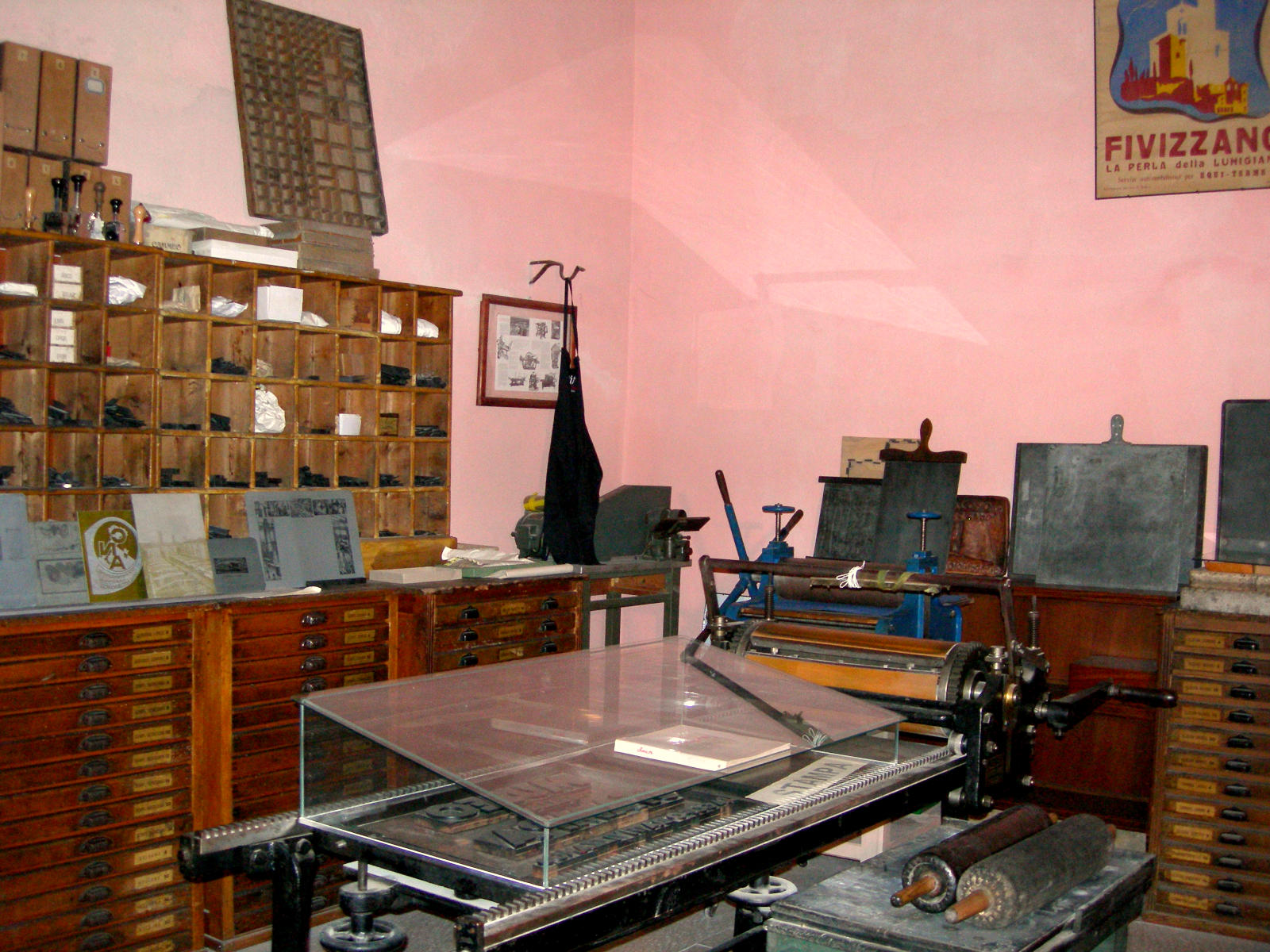Off the Beaten Path
As I leave the E80 autostrada, north of the well-known town of Carrara, I trace the shores of the Magra River. My destination is a little-known place one must seek out. The tiny community of Fivizzano — a village far from the usual tourist destinations of La Spezia and Carrara — rests in the mountain valleys of an area of Tuscany called the Lunigiana.
 A recent acquaintance, author of Italy Is My Boyfriend, Annette Joseph told me about this village. She and her husband own a gorgeous castello in this area of Tuscany. She explained the strong connection between use of printed type in Italy and the village of Fivizzano. My fascination with all things ‘bookish’ took flight. Thus, I made my way to the village’s Museum of Typography.
A recent acquaintance, author of Italy Is My Boyfriend, Annette Joseph told me about this village. She and her husband own a gorgeous castello in this area of Tuscany. She explained the strong connection between use of printed type in Italy and the village of Fivizzano. My fascination with all things ‘bookish’ took flight. Thus, I made my way to the village’s Museum of Typography.
Museum of Printing
 Fivizzano’s Palazzo Fantoni-Bononi — owned by brothers Loris Jacopo Bononi and Eugenio Bononi — represents a unique collection. During the 20th century, the brothers established the museum in their palazzo to honor the history of printing and the ties of that history with the Lunigiana.
Fivizzano’s Palazzo Fantoni-Bononi — owned by brothers Loris Jacopo Bononi and Eugenio Bononi — represents a unique collection. During the 20th century, the brothers established the museum in their palazzo to honor the history of printing and the ties of that history with the Lunigiana.
I entered the museum building after passing through a gated garden. The plain gray façade with a balcony that cuts across the second level French doors belies the treasures within. The museum houses many of the earliest books printed by Jacopo’s workshop, as well as rare presses used to print the earliest books.
Printing History
 History presents a quandary as to why, or how, the printing process began in this tiny Italian village. Printing operations in Vienna, London, Oxford, Geneva, Barcelona, and Brussels began at least five years after book printing on Jacopo da Fivizzano’s presses. Consequently, Between 1470 and 1474, his presses became known for the quality of their work, publishing the writings of authors like Cicero, Virgil, Juvenal, and others.
History presents a quandary as to why, or how, the printing process began in this tiny Italian village. Printing operations in Vienna, London, Oxford, Geneva, Barcelona, and Brussels began at least five years after book printing on Jacopo da Fivizzano’s presses. Consequently, Between 1470 and 1474, his presses became known for the quality of their work, publishing the writings of authors like Cicero, Virgil, Juvenal, and others.
Additionally, Fivizzano contains another fascinating and little known fact. Loris Jacopo Bononi discovered that in 1802 Fivizzano’s own Agostino Fantoni invented the first typewriter complete with carbon paper. Who would have imagined that such a small village would have been Italy’s birthplace of the printed book.

Loris was an author of great renown in Italy. During the years he lived in Rome, he circulated with people like Luchino Vistconti and Federico Fellini. He published three books that established his stature as one of the greatest authors of the twentieth century. Pier Paolo Pasolini praised Bononi’s Diario Postumo in a review published in his magazine, Tempo.
If You Go
You have to want to visit this lovely small village in the mountains north of Carrara. Although it is not a simple drive, Fivizzano’s history is more than worth the effort. Certainly, bibliophiles will find standing where the printing press was first used in Italy to be an unforgettable experience.
